Forget 68, remember 73
The 40th anniversary of a mythical year comes at a time of the world that is more concerned about the ecological crisis than about the architectures of desire.
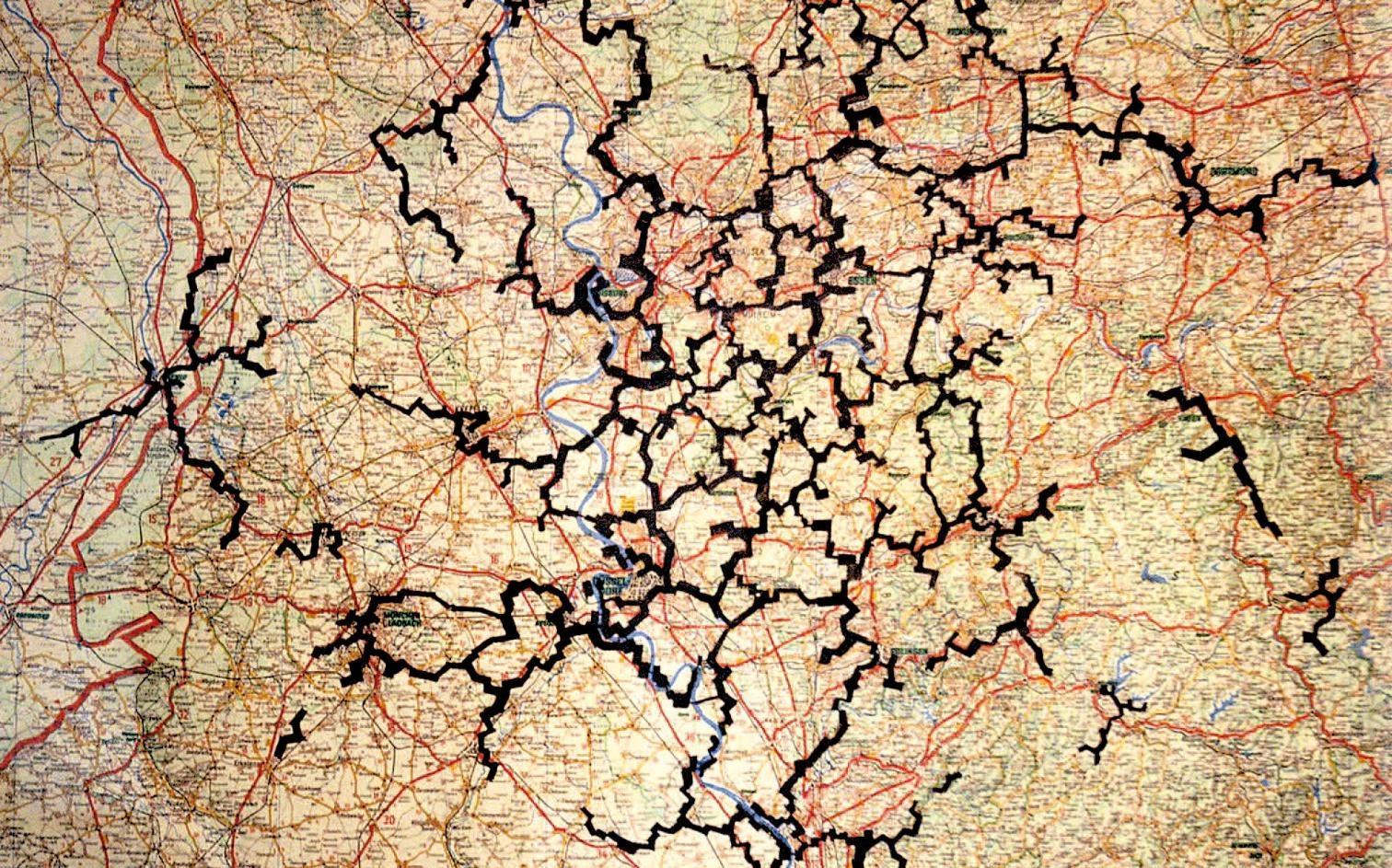
Daniel Cohn-Bendit suggests we forget 68, Dand it is a reasonable suggestion. Our world bears little resemblance to what it was forty years ago, and analyses made then can hardly be applied to a context marked by globalization and ecological crisis. The society of the spectacle, to be sure, has developed during the past decades to link up the planet with its web, but both climate change and the high cost of energy and food paint a panorama where the most pertinent references are the oil crises of 1973 and 1979. So Forget 68 – albeit recognizing Guy Debord’s premonitory lucidity – and, above all, remember 73: a diagnosis that in the often trivial territory of architecture means forgetting Situationism and the New Babylon that we associate with the May events, and remembering the neo-vernacular, geodesic or bioclimatic constructions, born around the rejection of industrial society that saw its fears confirmed in the energy crisis. Maybe this is the moment to forget the architectures of desire desire and to remember the architectures of necessity.

The New Babylon project of Constant, designed between 1958 and 1970 as a randon sequence of urban fragments, was an architectural symbol of the anarchic spirit of 68.

As the cover of Le Monde of 17 May documents, the student uprising of 68 began in Paris as a university movement of anti-authoritarian nature, coinciding in time with the intensification of the Vietnam War combats.
Social and Technical Utopias
Allow me a short biographical reminiscence. In May 1968 I was not in Paris, but at St Donat’s Cas-tle, on the banks of the Bristol Channel, preparing for my A-Level exams with 190 other students from 50 countries. Three of us wanted to echo the Paris events through a manifesto, but a gentle call to order on the part of the school director, admiral Sir Desmond Hoare, sufficed to nip the rebellion in the bud. A few months later I began university studies at the Madrid School of Architecture, and here, too, the May storm had raised waves in the academic ponds, so much that Javier Carvajal – head at the time of a school he had modernized, besides a prominent figure in the profession – preventively gathered the newcomers in an assembly where he demanded discipline if we at all aspired to have, like him, “a white suit and a red sports car”, a bribe or threat that served to maintain order throughout that school year. Madrid was not Paris, and neither was it Prague or Mexico City. I am writing this only to illustrate the extent to which authority prevailed at a time when engineering students went to class in jacket and tie, we still used logarithm tables or the slide ruler, computers were as big as rooms and our programming language was Fortran.
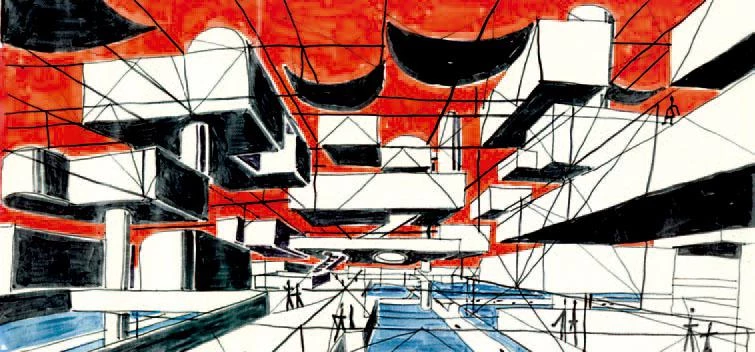
The light structures that joined technique and utopia in the Ville spatiale of Yona Friedman in 1958 (above) or in the project of David Georges Emmerich in the sixties (below), made the Time cover in 1964 with Buckminster Fuller.
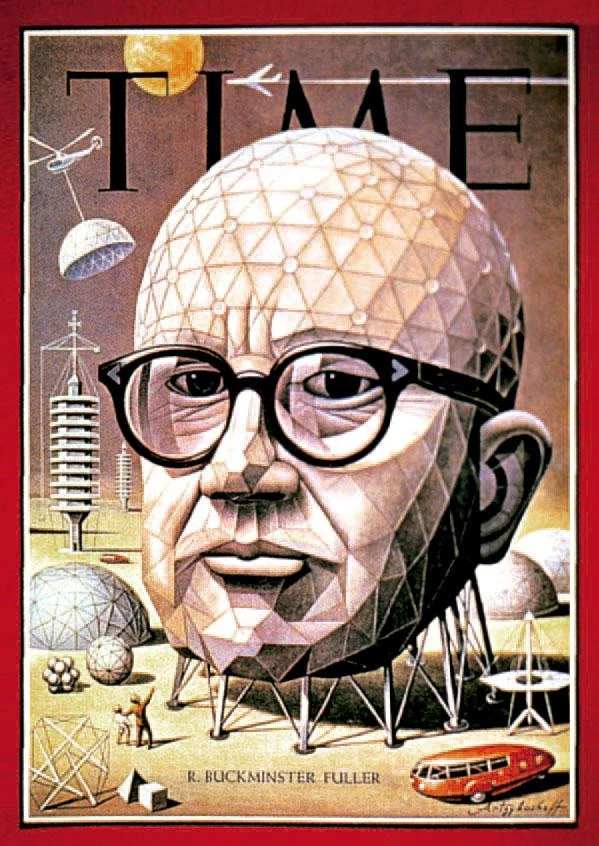
The world four decades ago seems as socially and technically remote as the Victorian Age, and it is quite impossible to perceive it as one’s own. Twenty years ago, the commemoration of the May of Paris gave rise to several monographic exhibitions on Situationism, and ten years ago it gave birth to essential texts like The Situationist City, by Simon Sadler, or Constant’s New Babylon, by Mark Wigley, besides an issue of October with texts by Guy Debord that would appear in book form four years later, coinciding with a biography of Debord himself by Andrew Hussey. Today, however, the experience seems to be intellectually and aesthetically worn out; even in a work as stimulating as that published in 2007 by Larry Busbea, Topologies: The Urban Utopia in France, 1960-1970, the New Babylon hardly merits a few mentions, tangled up with the urban Utopias of the Japanese Metabolists, the British Archigram or the Italian Superstudio, in a narrative of spatial urbanism and mobile architecture that has Yona Friedman as undisputed hero. The nomadic city envisioned by the leaders of what Raymond Aron defined as the great psychodrama of the 20th century seems to have given way to what another French writer, Françoise Choay, had bap-tized as ‘technotopias’ back in 1965.
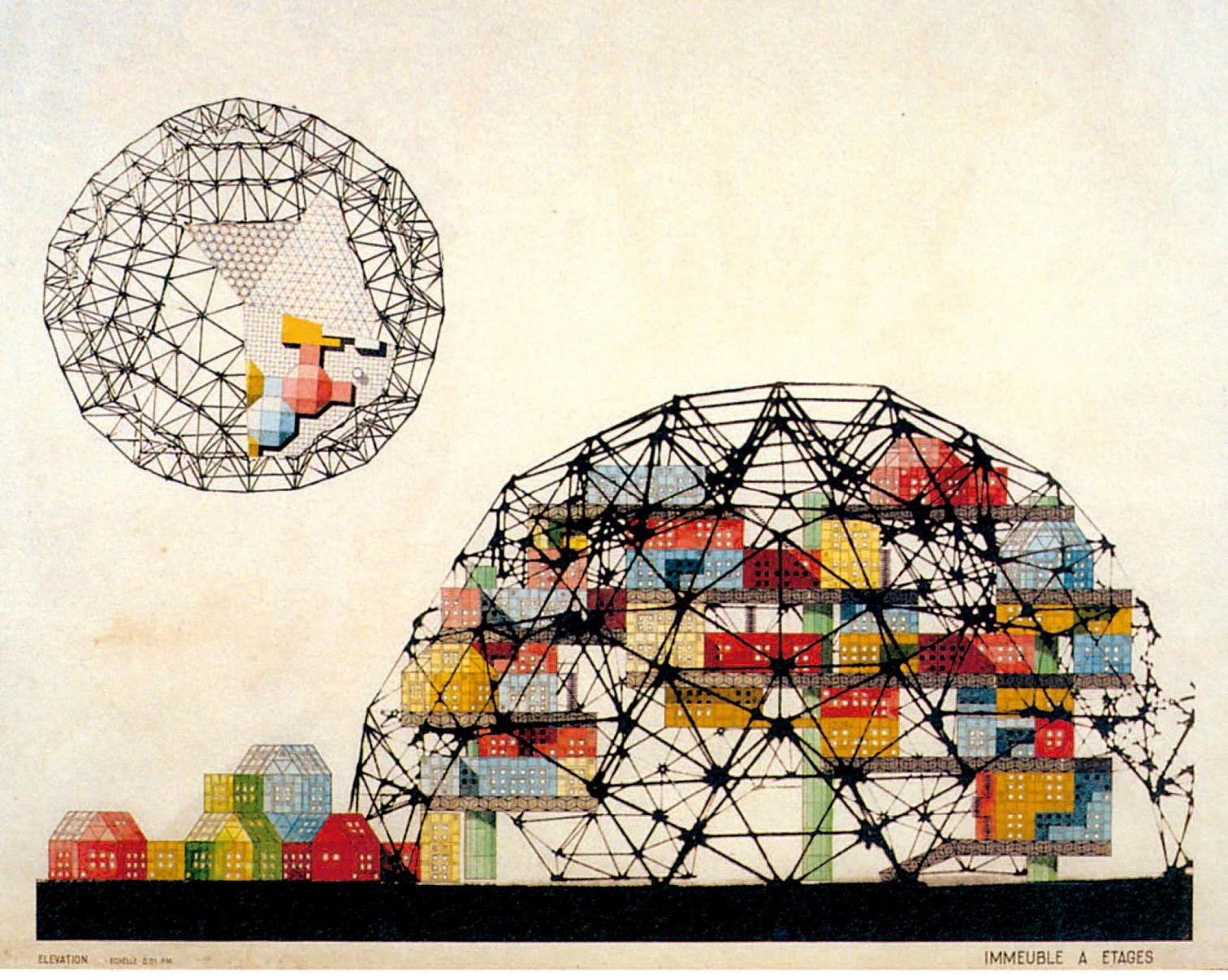
These technological Utopias, often read as ex-treme versions of the modern, are curiously akin to the return to the primitive and to origins that arises in reaction to the corporate appropriation of bureaucratic modernity. While young Europeans imagined new cities, young Americans abandoned them, and in the mid-sixties, students at Princeton or Yale organized agrarian communes in Vermont while Arcosanti rose in Arizona, Taos in New Mexico and Drop City in Colorado, in a flowering of al-ternative constructions which would soon choose as an icon the geodesic domes of Buckminster Fuller, linking the neo-vernacular to the tecnophile: 1964 was the year of Bernard Rudofsky’ s Architecture Without Architects at New York’s Museum of Modern Art, but also of the Time cover showing Fuller with a geodesic head. We like to think that these were also the years that architecture initiated post-modernity with two books published in 1966, Com-plexity and Contradiction in Architecture, by Robert Venturi, and L’architettura della città, by Aldo Rossi, but their popular influence would still take some time, and it was not until 1979 that Philip Johnson appeared on the Time cover holding the model of his Chippendale skyscraper for AT&T.

British counterculture produced techno-hedonist visionary architectures as influential as the Fun Palace of Cedric Price in 1959-1961 (above) or as the Plug-In City by Archigram’s Peter Cook in 1962-1964 (below).
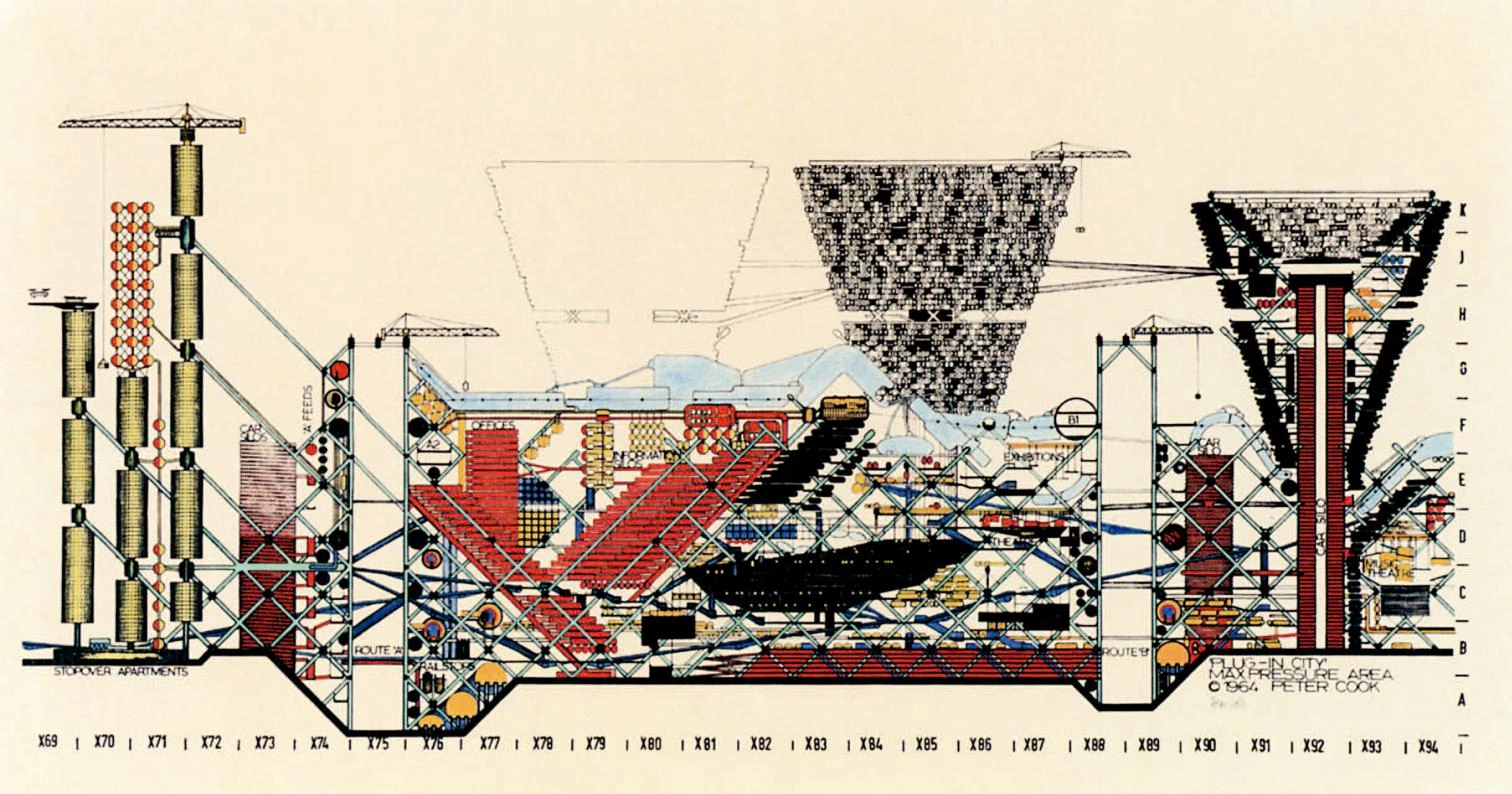
Both the liberal populism of the United States and the Marxist Tendenza of Europe questioned socialdemocratic modernity, and they would end up being swallowed by the conservative revolution of the eighties. Venturi and Rossi were published in Spain in the early seventies, but the oil crises of that decade shifted attention to alternative technologies, climate design and biological organicism; only with the economic recovery following the stabilization of oil markets in the mid-eighties would the em-phasis return to aesthetic debates, from which it would not stray during the subsequent period of prosperity. The crises of the 21st century have brought a renewed interest in the controversies of the seventies, and from the rediscovery of Stewart Brand’ s Whole Earth Catalog – the first edition of which was published precisely in 1968 – as a paper precursor of Google to the ecological constructions documented in the exhibition of the Canadian Cen-tre for Architecture in Montreal (Sorry, Out of Gas: Architecture’s Response to the 1973 Oil Crisis), the architectures of necessity make their way before the architectures of desire: the same ones that in the Paris of May ’68 had wanted to find the beach under the cobblestones, and the Homo ludens under the predictable clothes of the Homo faber.









